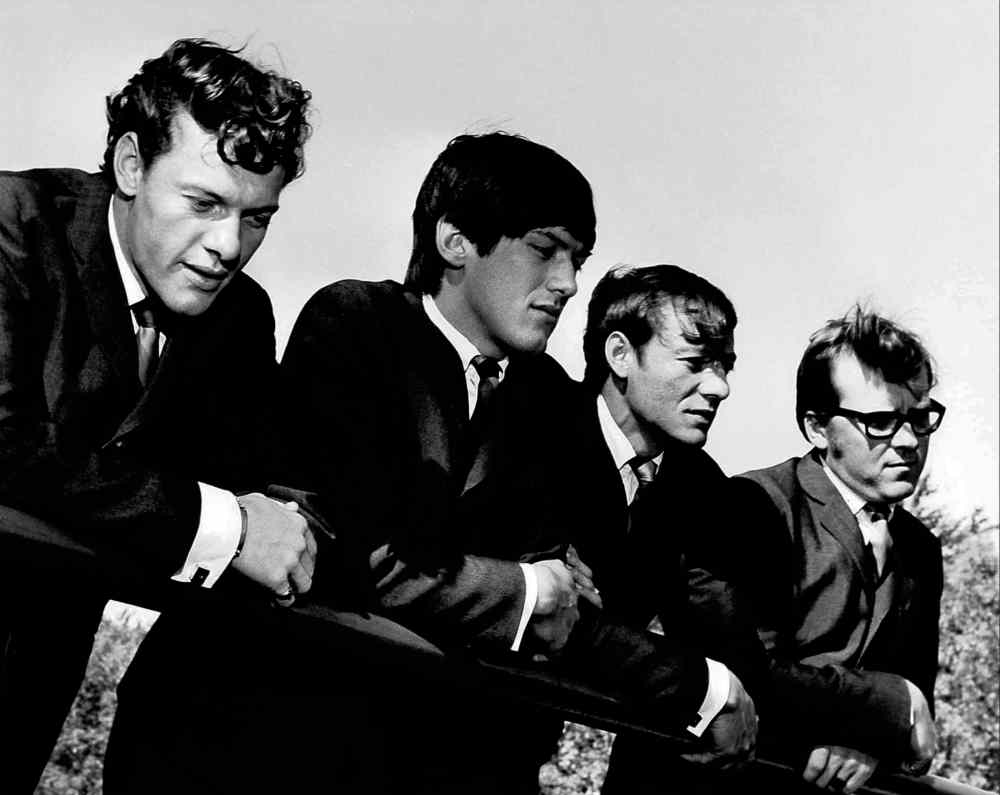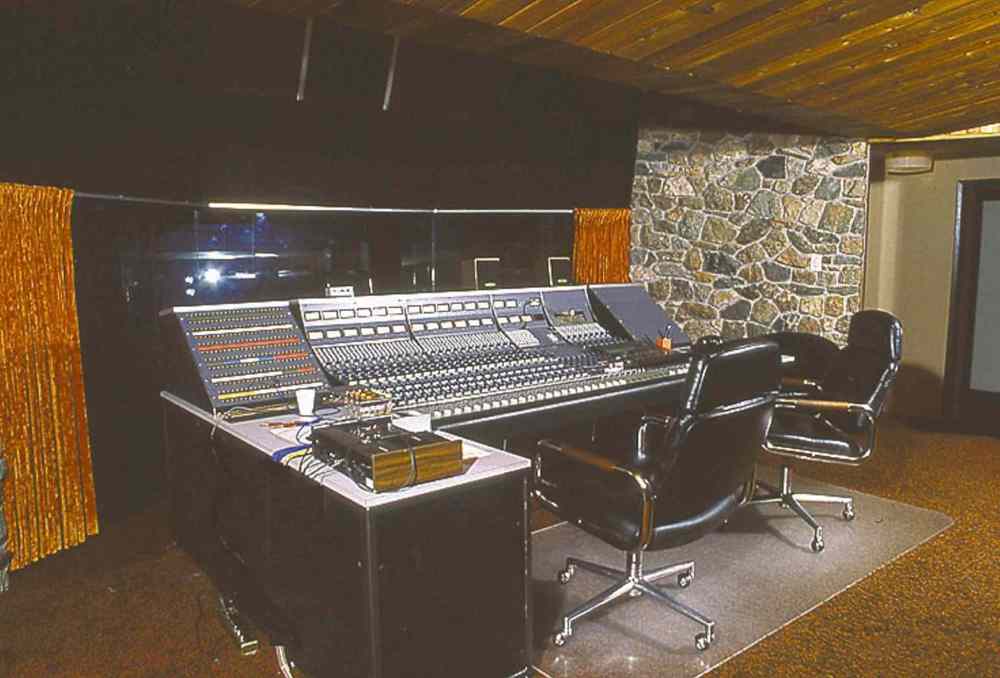It’s only rock ‘n’ roll
... but it led to life-long music careers for two sets of brothers
Advertisement
Read this article for free:
or
Already have an account? Log in here »
To continue reading, please subscribe:
Monthly Digital Subscription
$0 for the first 4 weeks*
- Enjoy unlimited reading on winnipegfreepress.com
- Read the E-Edition, our digital replica newspaper
- Access News Break, our award-winning app
- Play interactive puzzles
*No charge for 4 weeks then price increases to the regular rate of $19.00 plus GST every four weeks. Offer available to new and qualified returning subscribers only. Cancel any time.
Monthly Digital Subscription
$4.75/week*
- Enjoy unlimited reading on winnipegfreepress.com
- Read the E-Edition, our digital replica newspaper
- Access News Break, our award-winning app
- Play interactive puzzles
*Billed as $19 plus GST every four weeks. Cancel any time.
To continue reading, please subscribe:
Add Free Press access to your Brandon Sun subscription for only an additional
$1 for the first 4 weeks*
*Your next subscription payment will increase by $1.00 and you will be charged $16.99 plus GST for four weeks. After four weeks, your payment will increase to $23.99 plus GST every four weeks.
Read unlimited articles for free today:
or
Already have an account? Log in here »
Hey there, time traveller!
This article was published 27/04/2014 (4209 days ago), so information in it may no longer be current.
Many musicians playing the thriving local community club and school sock-hop circuit in the 1960s drifted back to school or to non-music vocations after a few years of fun, their glory days behind them.
Not so the four members of The Eternals. The two sets of brothers — Ron (keyboards) and Ted Paley (drums) along with John (guitar) and Harry Hildebrand (bass) — parlayed their love for music and recording into lifelong careers in music technology. In doing so they pioneered the business of recording and sound in western Canada.
Hailing from Rosa, Man., the Paley brothers hooked up with Steinbach’s Hildebrand boys in the early ’60s. Playing rock ‘n’ roll in a strict Mennonite community was pretty audacious for the latter brothers. Ron Paley recalls John purchasing a Fender amplifier from a local merchant in Steinbach. “It was his pride and joy but when the store owner found out John was using it to play rock ‘n’ roll, he came to his house, retrieved the amp and gave John his money back.”

Always fascinated by the recording process, the group set up their own studio in a barn on the Paley family’s farm. “We had recorded with Bob Burns producing us at Kay Bank studio in Minneapolis,” explains Ron, “and loved it. So when they were selling their recording board and mics we bought them and set them up in the barn.” As John recalls, “Mrs. Paley wouldn’t let us bring her piano into the barn so we had to run a long cord from the house to the grainary where we had the board set up.”
The quartet moved to Winnipeg in 1965, renting a house in St. Boniface where they lived and rehearsed. “Being two sets of brothers helped us avoid the pitfalls of other bands in the ’60s,” claims John. “Ron and I were the oldest so we looked after our younger brothers.” The following year the four quit their day jobs to turn professional ultimately setting their sights on the more lucrative club circuit in Ontario.
“We knew we weren’t the greatest musicians,” notes John, “so we focused on our singing and learned how to be more versatile all-round entertainers. That really served us well in the clubs. We could even pull out a fiddle and play polkas. We were always re-booked for more money. And we didn’t damage the place, either. We were well-behaved and took our music seriously.”
Booked by Terry Morris, the band became a top draw in eastern clubs. “We were held over for fourteen weeks in Wawa, (Ont.,) played Expo 67, filled in for The Staccatos at the big Chaudiere Club in Hull, (Que.,) and played three weeks at Toronto’s The Friars Club,” states Ron. The latter engagement at one of Canada’s best-known nightclubs became a pinnacle for the band, who returned to Winnipeg soon after to build their own professional recording studio.
Between 1967 and 1969, The Eternals released seven singles, including the Randy Bachman penned The Real World Of Mary Ann. “We recorded with the Minneapolis Symphony Orchestra conducted by Bob McMullin from CBC,” Ron recalls. “That was an amazing experience.”

In 1968, the four opened Century 21 recording studios, Winnipeg’s first independent multi-track facility. Located on King Edward Avenue, the studio featured cutting edge 8-track recording. Responsibilities were divided between the four band members. “I handled the technical and equipment duties,” Ron explains, “John was the master mixer and engineer, Harry was on the creative side and Ted was the bean counter who looked after the clients and accounts.”
While the studio was booked heavily by a variety of recording artists, from Harry Belafonte (“Harry loved coming to Winnipeg to record,” notes John) to Streetheart, commercial jingles helped pay the bills. Ron estimates Harry produced more than 1,000 jingles in his career, including some for McDonald’s. “We realized there was a need for this kind of work,” says John, who still recalls the words to their first jingle for a Dixie Lee Chicken franchise in southern Ontario.
As the studio flourished, the four expanded into other sound-related ventures including equipment rentals. In 1972, the Paley brothers branched out into broadcast and recording equipment sales, opening Oakwood Audio. “We were known as The Inconvenient Stereo Store and our manager was Ernie Klem or ‘Weird Old Ernie,’ ” laughs Ron. Bobby Vinton became their first major client, with Oakwood’s Gerry Leger taking their gear around the world for three years. Among the company’s clients were the Pope’s giant Birds Hill mass and the Calgary Olympics. John became the main sound man for the Calgary Stampede, a gig he kept for 37 years.
Two years later, Century 21 recording studio relocated to a former Masonic lodge on Leila Avenue in West Kildonan. The impressive facility was built by legendary California studio designer Tom Hidley of Westlake Recording Studios fame and was the only Westlake studio in Western Canada. “We always reinvested in the business,” notes John, who spent his honeymoon buying recording equipment in Minneapolis. “We wanted to work with the best equipment.”
As Oakwood Audio grew, the two sets of brothers divided companies, with the Hildebrands remaining with the recording studio. Boasting 24-track state-of-the art recording, the studio remained open until 1998, when digital recording began replacing analog. Their top-of-the-line Neve recording board was purchased by Australian band AC/DC, who sent their crew to Winnipeg to dismantle it and fly it back to Australia for their own studio.

Embracing the digital revolution, Ron founded Media Touch software company in 1994. Its software is found in broadcast facilities across the continent, including influential 1010 WINS in New York. He later created Ron Paley Broadcast and bought the award-winning Digital Jukebox company. Ted works with him.
A rarity in the music business, the two sets of brothers continue to remain close after 50 years of working together. “I can never remember Ron and I having an argument,” states John. “Even after we all married, we lived near each other. We’re all still friends.”
Sign up for John Einarson’s Off The Record summer courses at mcnallyrobinson

Born and raised in Winnipeg, music historian John Einarson is an acclaimed musicologist, broadcaster, educator, and author of 14 music biographies published worldwide.
Our newsroom depends on a growing audience of readers to power our journalism. If you are not a paid reader, please consider becoming a subscriber.
Our newsroom depends on its audience of readers to power our journalism. Thank you for your support.



